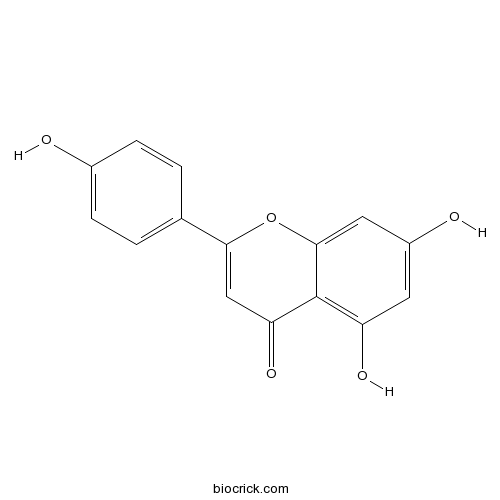Ajuga nipponensis
Ajuga nipponensis
1. The products in our compound library are selected from thousands of unique natural products; 2. It has the characteristics of diverse structure, diverse sources and wide coverage of activities; 3. Provide information on the activity of products from major journals, patents and research reports around the world, providing theoretical direction and research basis for further research and screening; 4. Free combination according to the type, source, target and disease of natural product; 5. The compound powder is placed in a covered tube and then discharged into a 10 x 10 cryostat; 6. Transport in ice pack or dry ice pack. Please store it at -20 °C as soon as possible after receiving the product, and use it as soon as possible after opening.
Natural products/compounds from Ajuga nipponensis
- Cat.No. Product Name CAS Number COA
-
BCN5658
Apigenin520-36-5
Instructions

Antioxidant and hepatoprotective effects of Ajuga nipponensis extract by ultrasonic-assisted extraction.[Pubmed: 27261848]
To investigate suitable condition for extraction of the active components from Ajuga nipponensis (A. nipponensis).
[Chemical constituents from Ajuga nipponensis].[Pubmed: 25090678]
To study the chemical constituents of Ajuga nipponensis.
New phytoecdysteroids from cultured plants of Ajuga nipponensis Makino.[Pubmed: 17210166]
An extract from aerial parts of Ajuga nipponensis Makino was examined by high performance liquid chromatography for minor ecdysteroids. Along with the compounds already reported, namely cyasterone, ajugasterone C, cyasterone 22-acetate and 22-dehydrocyasterone, the presence of three additional bands with the expected ecdysteroid-like UV absorption was observed. The structures of the isolates were unambiguously elucidated based on extensive NMR spectral studies (one and two-dimensional experiments) and pointed out three new phytoecdysteroids. One of the new compounds, 22-dehydrocyasterone 2-glucoside is just the second example of a C-2 glucosyl derivative. The other two compounds displayed hemiacetal functions in the side chain, one unprecedented, and were named ajugacetalsterone A and B.
Ajuga nipponensis Makino poisoning.[Pubmed: 16255341]
A 58-year-old man ingested an herbal preparation of Ajuga nipponesis Makino, as recommended in folk medicine for the treatment of hepatoma. He developed profound gastrointestinal upset immediately, and decreasing urine output and bilateral leg edema over the following 2 days. Notable laboratory findings included elevated levels of blood urea nitrogen, creatine, bilirubin, and hepatic transaminases. Deterioration of renal function was noted during hospitalization and he died 11 days after ingesting the herbal preparation. Two other healthy individuals also consumed the same herbal preparation at the same time but developed only vomiting and diarrhea. One or more of the four major components of Ajuga nipponesis Makino may be responsible for the renal toxicity found in our patient.
Analysis of phytoecdysteroids in cultured plants of Ajuga nipponensis makino.[Pubmed: 11249608]
Cultured plants of Ajuga nipponensis contained cyasterone (1), ajugasterone C (2), cyasterone-22-acetate (3) and 22-dehydrocyasterone (4) based on HPLC and NMR data, whereas 20-hydroxyecdysone was not detectable. The presence of compounds 2 4 is reported for the first time in this species. Compound 1 is the main phytoecdysteroid component found in both preblossom and blossom plants, but the latter contained higher amount than the former. Compared with other parts of the plant, the highest percentage of 1 and 3 occurred in leaves, amounting to 60.1% and 88.0% respectively, whereas the flowers contained mainly 2, which represented 72.8% of the total amount in whole plant. The contents of phytoecdysteroids in stems were very low.


